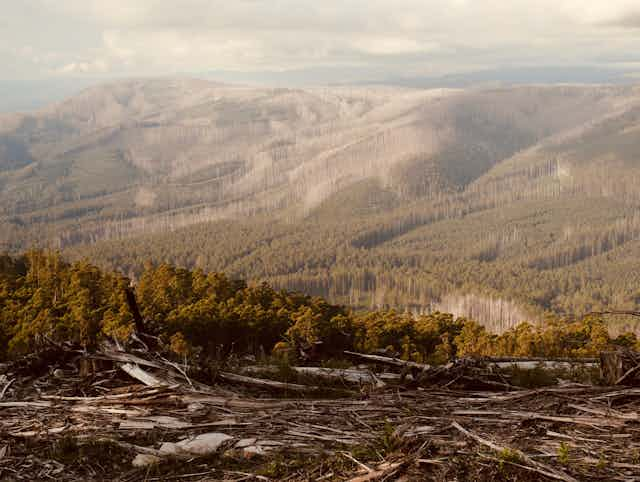Treasurer Josh Frydenberg’s cash-splash budget has a firm eye on the upcoming federal election. In the environment portfolio, two spending measures are worth scrutinising closely.
First is a A$100 million round of the Environment Restoration Fund – one of several grants programs awarded through ministerial discretion which has been found to favour marginal and at-risk electorates.
Second is $62 million for up to ten so-called “bioregional plans” in regions prioritised for development. Environment Minister Sussan Ley has presented the measure as environmental law reform, but I argue it’s a political play dressed as reform.
It’s been more than a year since Graeme Samuel’s independent review of Australia’s environment law confirmed nature on this continent is in deep trouble. It called for a comprehensive overhaul – not the politically motivated tinkering delivered on Tuesday night.

A big barrel of pork?
The Environment Restoration Fund gives money to community groups for activities such as protecting threatened and migratory species, addressing erosion and water quality, and cleaning up waste.
The first $100 million round was established before the 2019 election. In March 2020 it emerged in Senate Estimates that the vast majority had been pre-committed in election announcements. In other words, it was essentially a pork-barelling exercise.
The grants reportedly had no eligibility guidelines and were given largely to projects chosen and announced as campaign promises – and mostly in seats held or targeted by the Coalition.
Given this appalling precedent, the allocation of grants under the second round of the fund must be watched closely in the coming election campaign.
Read more: A cost-of-living budget: cuts, spends, and everything you need to know at a glance

A tricky Senate bypass
Australia’s primary federal environment law is known as the Environmental Protection and Biodiversity Conservation (EPBC) Act.
Under provisions not used before, the need for EPBC Act approval of developments such as dams or mines can be switched off if the development complies with a so-called “bioregional plan”.
Bioregions are geographic areas that share landscape attributes, such as the semi-arid shrublands of the Pilbara.
In theory, bioregional plans deliver twin benefits. They remove the need for federal sign-off — a state approval will do the job – and so eliminate duplication. And national environmental interests are maintained, because state approvals must comply with the plans, which are backed by federal law.
But the government’s record strongly suggests it’s interested only in the first of these benefits.
Since the Samuel review was handed down, the government has largely sought only to remove so-called “green tape” – by streamlining environmental laws and reducing delays in project approvals.
Bills to advance these efforts have been stuck in the Senate. Now, the government has opted to fund bioregional plans which, as an existing mechanism, avoid Senate involvement.
Meanwhile, the government has barely acted on the myriad other problems Samuel identified in his review of the law, releasing only a detail-light “reform pathway”.

A rod for the government’s back?
Ironically, bioregional plans may create more problems for the government than they solve.
First, the surveys needed to prepare the plans are likely to spotlight the regional manifestations of broad environmental problems, such as biodiversity loss.
And the EPBC Act invites the environment minister to respond to such problems in the resulting plans. This implies spelling out new investments or protections – challenging for the government given its low policy ambition.
The federal government would also need to find state or territory governments willing to align themselves with its environmental politics, as well as its policy. Of the two Coalition state governments, New South Wales’ is significantly more green than the Morrison government, while Tasmania is not home to a major development push.
Western Australia’s Labor government has been keen to work with Morrison on streamlining approvals, but fudging environmental protections is another thing altogether. And Labor governments, with a traditionally more eco-conscious voter base, are particularly vulnerable to criticism from environment groups.
The government may fudge the bioregional plans so they look good on paper, but don’t pose too many hurdles for development. Such a fudge may be necessary to fulfil Morrison’s obligations to the Liberals’ coalition partner, the Nationals.
Tuesday’s budget contained more than $21 billion for regional development such as dams, roads and mines – presumably their reward for the Nationals’ support of the government’s net-zero target.
Bioregional plans containing strict environmental protections could constrain or even strangle some of these developments.

But on the other hand, the government may be vulnerable to court challenges if it seeks to push through bioregional plans containing only vague environmental protection.
For a government of limited environmental ambition bioregional plans represent more a political gamble than a reform.
Morrison has clearly rejected the safer option of asking Ley to bring forward a comprehensive response to the Samuel review, casting streamlining as part of a wider agenda.
Such a reform would have better Senate prospects and created room to negotiate.
Morrison could also have promised to reintroduce the streamlining bills after the election. But he must have concluded that the measure has no better chance of getting through the next Senate than this one.
What price fundamental reform?
If the government successfully fudges bioregional plans, the result would be watered-down national environmental protections.
This would run completely counter to the key message of the Samuel review, that to shy away from fundamental law reforms:
“is to accept the continued decline of our iconic places and the extinction of our most threatened plants, animals and ecosystems”.
Clearly, good reform is too expensive — politically as well as fiscally — for this budget.
Read more: A major report excoriated Australia's environment laws. Sussan Ley's response is confused and risky

